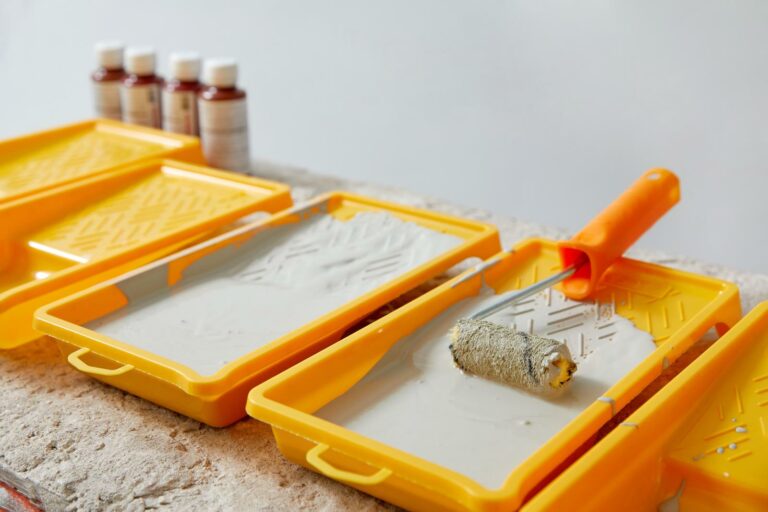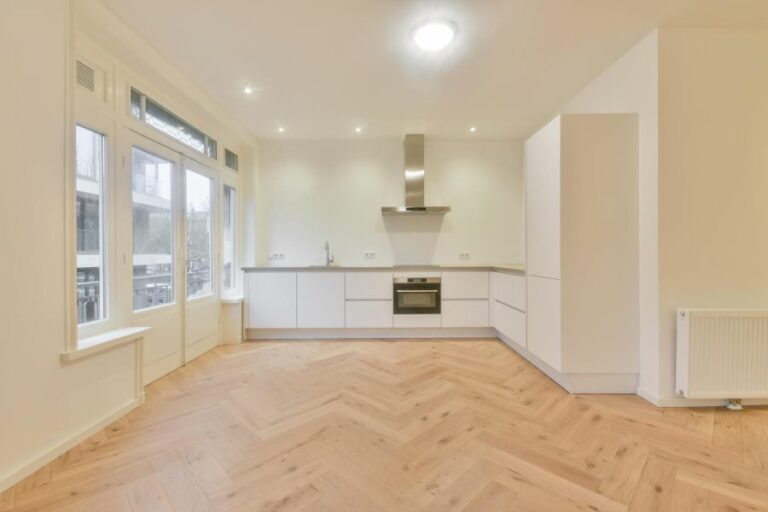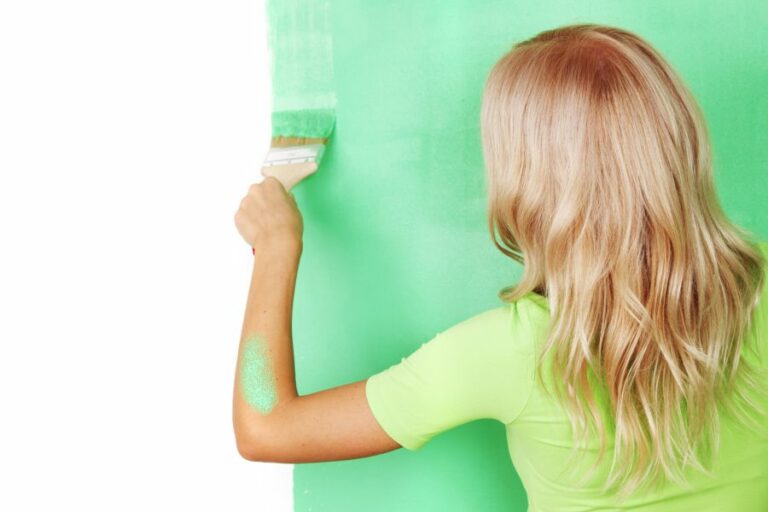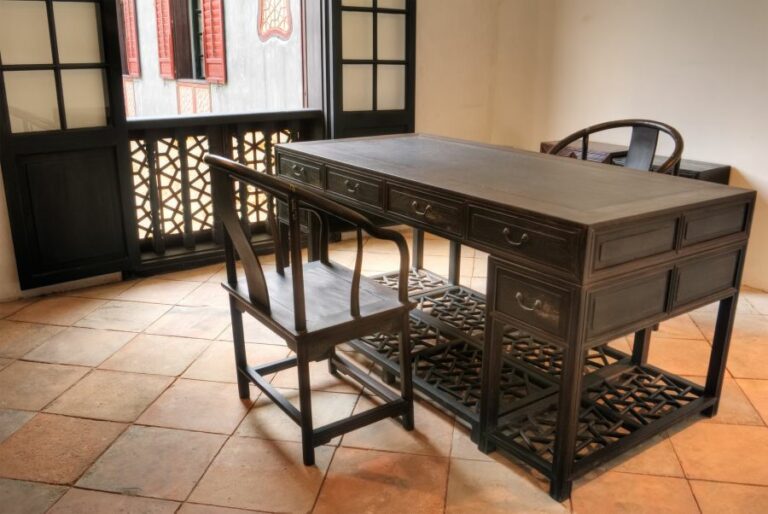Best Interior Paint For Tiny Rooms, 25 Things You Should Know
Are you struggling to find the best interior paint to make your tiny room feel more spacious and welcoming? Look no further! With years of experience and countless tiny room transformations, we have the answer you’ve been searching for. Keep reading to discover the top paint options that will make your small room feel larger, brighter, and more inviting than ever before.
Best interior paint for tiny rooms:
For tiny rooms, opt for light and neutral colors like off-white, light gray, soft beige, pale blue, and gentle green to create an illusion of a larger space. Choose paint finishes like satin, semi-gloss, or eggshell to reflect light, and consider strategic paint techniques like vertical or horizontal lines and accent walls. Recommended brands include Benjamin Moore, Sherwin-Williams, Behr, and Valspar.

Tiny rooms can feel larger and more inviting with the right interior paint choice. From airy pastel hues to vibrant colors, we’ve got just the info you need! Read on for our recommendations and tips for selecting the best paint to transform your small spaces into stylish retreats.
Contents
- 1 Top Interior Paints for Small Rooms
- 2 Ideal Interior Colors for Cozy Homes
- 3 Optimal Paint Colors for Compact Spaces
- 4 Colors that Make Small Rooms Appear Larger
- 5 Perfect Ceiling Colors for Limited Spaces
Top Interior Paints for Small Rooms
When it comes to painting tiny rooms, choosing the right paint color and type can make a world of difference in making the space feel larger and more inviting.
Whether it’s a small bedroom, bathroom, or a tiny living space, the tips and recommendations in this article will help you select the perfect paint to transform your small room into a cozy sanctuary.
• Light and Neutral Colors to Open Up Space
One of the main challenges of a tiny room is making it feel more spacious. To achieve this, opt for light and neutral paint colors that create an illusion of larger space and openness. Some recommended shades include:
- Off-white
- Light gray
- Soft beige
- Pale blue
- Gentle green
These colors naturally reflect light and maintain a clean, minimalist appearance. If you want to add some personality or contrast, consider introducing bolder accents through artwork, furniture, or accessories.
Expert advice: Using a monochromatic color scheme where most elements in the room are varying shades of the same color can enhance the sense of openness and depth.
• Finish Matters: Choose the Right Paint Sheen
The finish of your paint is another crucial factor to consider. Some interior paint sheens are better suited for small spaces, as they can help bounce light around the room and make it feel larger. The top choices are:
– Satin
Satin finish paint is an ideal choice for smaller rooms, as it has a low to medium sheen and a smooth finish. This helps create a sense of depth by diffusing light, giving the illusion of a larger space. Plus, it’s easy to clean and is resistant to moisture, which makes it perfect for small bathrooms or kitchens.
– Semi-gloss
Semi-gloss paint has a slightly higher sheen than satin and delivers even better light-reflecting quality.
However, it can also show imperfections on the wall, so it’s essential to ensure the surface is smooth before painting. This finish is an excellent choice for trims, doors, and areas exposed to more wear and tear.
– Eggshell
If you’re looking for a more muted sheen, an eggshell finish is your best bet. It provides a soft, velvety texture and is more forgiving when it comes to minor surface imperfections. Eggshell is a popular choice for living rooms or bedrooms, where less sheen is usually preferred.
Caution: Avoid using flat or matte finishes in tiny rooms, as they tend to absorb light rather than reflect it.
• Paint Techniques to Enhance Spaciousness
Utilizing strategic paint techniques can make a significant impact in small spaces. Try incorporating these creative ideas into your painting project:
– Vertical or Horizontal Lines
Painting stripes on the walls can visually elongate or widen the room. Vertical lines create the appearance of taller walls and higher ceilings, while horizontal lines give the impression of broader space. Choose a small-scale stripe pattern in alternating shades of your base color for the best results.
– Accent Walls
Using a slightly darker or bolder shade on a single wall can create depth in a small room. This technique works best on a wall without windows or doors, so the accent color doesn’t disrupt the room’s flow. Just be sure not to go too dark, as it can make the room feel even smaller.
• Selecting the Right Paint Brand
When it comes to choosing a paint brand for your tiny room, you need a product with excellent coverage, durability, and minimal odor. Some highly-recommended brands are:
- Benjamin Moore
- Sherwin-Williams
- Behr
- Valspar
To find the perfect paint formula, consult with a professional at your local paint store. They will be able to guide you toward the best product for your specific project.
By following the tips and recommendations in this article, you can choose the best interior paint to make your tiny room feel more spacious, stylish, and inviting.
Remember to consider light, neutral colors, the right paint finish, strategic paint techniques, and a reputable paint brand to ensure a successful transformation of your small space.
Paint Brand | Color | Color Name | Finishing |
|---|---|---|---|
Benjamin Moore | Light Blue | Water’s Edge | Eggshell |
Sherwin-Williams | Off White | Alabaster | Satin |
Behr | Light Gray | Classic Silver | Matte |
Valspar | Pale Yellow | Buttercream Froth | Eggshell |
Farrow & Ball | Soft Pink | Nancy’s Blushes | Eggshell |
Ideal Interior Colors for Cozy Homes
When it comes to designing a tiny house, selecting the perfect interior color scheme is essential to make the most of limited space.
• Why Light Colors Work Best for Tiny Houses
In small spaces, light colors are generally recommended because they provide numerous benefits. Light colors create an illusion of a larger, more open space by reflecting light throughout the room, whereas darker colors tend to absorb light and make a room feel closed in.
– Personal Recommendation: White
White is one of the most popular choices for tiny houses and for good reason. It offers a clean, modern look and can easily be paired with any accent colors to add personality and style.
Additionally, white walls provide a blank canvas that allows you to change the feel of your home with the addition of different decorative elements.
– Personal Recommendation: Light Gray
A slightly off-white or light gray color is another excellent choice for tiny house interiors. Light gray offers a bit more depth and character than plain white walls while still reflecting light and maintaining the open, spacious feel desired in a small space.
– Personal Recommendation: Soft, Pastel Colors
Pastel colors like pale blues, greens, and pinks can provide a cozy and inviting atmosphere while still keeping the space light and airy. They are an excellent choice if you’re looking for a more colorful option without overwhelming the space.
• The Role of Accent Colors in Tiny House Interiors
While keeping walls light and neutral is important in a tiny house, adding accent colors through furniture, decorative elements, and even textiles can bring life and personality into your small living space.
Think of these colors as icing on the cake, adding visual interest and depth to your light, neutral base.
– Personal Recommendation: Natural Wood Tones
Integrating natural wood tones as an accent color can add warmth to a space dominated by light, neutral colors. Wood adds a timeless, organic feel to a tiny house, creating an inviting and comfortable atmosphere.
– Personal Recommendation: Bold, Vibrant Hues
Incorporating bold, vibrant colors in small doses can create a focal point in your tiny house, drawing attention to specific design elements. When used sparingly, bright accent colors add a playful and lively touch to an otherwise neutral space without feeling overwhelming.
– Personal Recommendation: Earthy, Muted Tones
Consider earthy, muted tones like sage green, dusty rose, or burnt orange for a more subdued, calming accent color palette. These colors work well in tiny house interiors, adding visual interest without making the space feel cluttered or busy.
• The Importance of Choosing the Right Paint Finish
In addition to color selection, the type of paint finish is crucial in a tiny house. A satin or eggshell finish is highly recommended for optimum light reflection and an open feel. These finishes have a low level of sheen, allowing them to reflect light without appearing too glossy.
Glossy finishes should be reserved for areas that require frequent cleanings, such as kitchens and bathrooms, as these finishes are highly durable and resistant to both stains and moisture.
• In Conclusion
Choosing the right interior color for your tiny house is a vital step in creating a beautiful, functional living space. Opt for light, neutral colors for your walls, and utilize accent colors to bring personality and visual interest to the space.
Remember to select the appropriate paint finish to optimize light reflection and durability.
Rank | Color | Reason |
|---|---|---|
1 | White | White is the most popular choice for tiny house interiors as it creates a sense of open and airy space. |
2 | Light Grey | Light grey is a neutral color that can make a space feel larger while offering a warmer tone than pure white. |
3 | Soft Pastels | Soft pastel colors, such as pale blues or light greens, can create a calming atmosphere and add a touch of personality to a tiny house. |
4 | Beige | Beige is a versatile neutral color that exudes warmth and helps to give a sense of depth and space. |
5 | Light Wood Tones | Using light wood tones on interior surfaces can create a sense of continuity and cohesion, making the space feel larger and more open. |
Optimal Paint Colors for Compact Spaces
A tiny room can pose various challenges to homeowners and interior designers, particularly when it comes to choosing the right color to make it appear more spacious and welcoming. With numerous color options to choose from, it can be overwhelming to decide on the perfect shade.
• Light Colors: A Go-To Option for Tiny Rooms
One of the most common recommendations for small spaces is opting for light shades. Light colors have the ability to create a sense of openness, making the room feel bigger and airier.
– White: A Timeless Choice
White is a classic option when it comes to room colors. It is versatile, neutral, and can easily be complemented with various other hues. Additionally, it can make a small space appear brighter by reflecting light, resulting in a more spacious feel.
According to House Beautiful, whites with warm undertones, such as ivory or cream, can add warmth to a tiny room without making it feel closed off.
– Light Grey: A Modern Twist
For a more contemporary touch, light grey can be an excellent choice for small spaces. It provides a neutral base that can be accented with pops of vibrant colors or softened with pastels. Additionally, incorporating varying shades of grey can add depth to the room, making it appear less cramped.
– Soft Pastels: Subtle Hues for a Cozy Space
Pastel colors, such as pale blue or blush pink, can have a calming effect on a small room while also providing a sense of space. These soothing shades can make a tiny room feel more intimate without overwhelming the space.
• Expanding Your Palette: Non-Traditional Color Choices for Small Rooms
While light colors are often recommended for small spaces, there are other unconventional options that can be used to create a stunning effect and make a tiny room feel more spacious.
– Bold Accents: Adding Character to Your Space
Adding a bold accent color to one wall or a specific area of a small room can create a focal point that makes the space feel more defined and intriguing.
For instance, deep navy blue or emerald green can add a touch of luxury and sophistication without making the room feel confined, as long as it is balanced with lighter colors in the rest of the room.
– Earthy Tones: Bringing Nature Indoors
An often-underrated choice for small rooms is earthy tones, such as beige, taupe, or terracotta. These colors can add warmth and depth, making the space feel more inviting. When combined with natural materials like wood or rattan, they can evoke a sense of nature and tranquility in a small room.
• Tips for Effectively Incorporating Color in Tiny Rooms
– Use Light-Colored Furniture
Incorporating light-colored furniture pieces in your tiny room can create a sense of visual continuity, resulting in a more spacious feel. Lighter furniture can also reflect more light, making the room appear brighter.
– Implement Patterns Wisely
Patterns can add visual interest to a small space. However, it is essential to use patterns sparingly to prevent them from overwhelming the room. Consider blending in patterns with more neutral elements or using subtle patterns that do not clash with the overall color scheme.
– Remember the Ceiling
Painting the ceiling with a slightly lighter shade than the walls can create an illusion of height, making a small room feel more spacious. This trick can be particularly helpful in rooms with low ceilings.
– Consider Room Function and Aesthetic
The purpose of the room and the overall aesthetic you wish to achieve should also be taken into account when selecting the best color. For instance, a study or home office might benefit from a more vibrant, energizing color, while a bedroom may require a more calming and soothing shade.
• Conclusion
Ultimately, the best color for a tiny room depends on personal preferences and the intended atmosphere for the space. Light colors, such as white or pastel shades, are often recommended for small spaces due to their ability to make the room feel more open and airy.
However, bolder and earthier colors can also be effectively incorporated into tiny rooms with careful planning and execution. By considering these tips and incorporating the right mix of colors, patterns, and furniture, your tiny room can become a stylish and inviting space.
Color | Description |
|---|---|
White | White creates a sense of simplicity and cleanliness. It reflects light and helps the room feel more spacious. |
Light Gray | Light gray is a subtle, versatile color that can create a calming atmosphere and make a small room feel more open. |
Soft Blue | Soft shades of blue have a tranquil and soothing effect. They can make a small room feel more peaceful and spacious. |
Light Green | Light green shades are refreshing and create a balance between warmth and coolness. They can make a small room feel larger and brighter. |
Light Purple | Light purple shades evoke a sense of calm, creativity, and warmth. They can make a small room feel more expansive and inviting. |
Colors that Make Small Rooms Appear Larger
Selecting the right color for a small room can not only make it appear larger but also drastically improve its overall appearance.
• Light and Cool Colors
Light and cool colors tend to make a room appear larger by visually expanding the space. The cool tones recede into the background and reflect light better, giving a sense of increased space.
– White and Off-White
White is a classic choice for making any room appear larger. It reflects light, which helps to brighten up the space and increase the perception of size. Off-white tones, such as ivory and cream, can have a similar effect while adding a touch of warmth to the room.
We recommend using shades of white and off-white for walls, ceilings, and large furniture items to create a sense of continuity and space.
– Cool Blue Shades
Pale blue tones can create a calming atmosphere while visually expanding a small room. Light blues, such as powder blue or sky blue, evoke the sky and the sea and can give the impression of a more open and airy space.
We recommend selecting a cool, light blue shade as the primary color for walls and complementing it with white or off-white trim and accents.
– Light Greens
Moss, sage, and other light green shades can make a small room appear larger. These subtly tinted colors blend effortlessly with white and off-white hues, giving the room a fresh and inviting look.
We recommend pairing a light green shade with wooden accents and neutral furniture for a balanced and soothing atmosphere.
• Warmer Tones for Visual Balance
In some cases, you might want to add warmth to a small room without sacrificing perceived space. In this case, consider opting for warmer colors that are still light in tone.
– Light Grays and Beiges
Light gray and beige tones can make a small room appear larger while adding an element of warmth. These neutral tones create visual interest without overwhelming the space.
We recommend choosing a soft gray or beige hue for walls and complementing it with natural materials, such as wood or stone, for a streamlined and sophisticated look.
– Pale Lavender and Pink
Pale lavender and pink shades can make a small room seem more spacious while adding a touch of delicate, warm-toned color. These hues can be very soothing, making them ideal for bedrooms and bathrooms.
We recommend introducing pale lavender or pink to your small room through wall color or furnishings, and balancing it out with crisp white accents.
• Additional Tips for Expanding Small Spaces
Beyond color selection, there are several other design techniques that can help make small rooms appear larger. Here are a few additional recommendations:
- Use mirrors strategically to reflect light and make the room appear more expansive.
- Opt for vertical lines, such as floor-to-ceiling shelves or vertical wall patterns, to draw the eye upward and create the illusion of height.
- Utilize multi-functional furniture to minimize clutter and maximize available floor space.
- Keep furniture pieces with exposed legs, as this can make the room feel more open and airy.
• Closing Thoughts
Ultimately, choosing the right color to make a small room appear larger comes down to personal preference and the overall design goal of the space. With various options ranging from cool whites to warm grays, there’s no shortage of possibilities to consider when developing your design plan.
By carefully selecting colors and incorporating other design techniques, you can create a visually appealing and spacious sanctuary in even the smallest of rooms.
Perfect Ceiling Colors for Limited Spaces
Small rooms can sometimes feel cramped, cluttered, and less spacious than desired. Choosing the right ceiling color can help create the illusion of more space, making a small room feel larger and more comfortable.
• Light Colors Create an Open Space
One of the most effective ways to make a small room feel bigger is by painting the ceiling a light color. Light colors reflect natural light, which creates the appearance of more open space. Some popular light colors for ceilings include:
– White
White is the most obvious choice for many people when it comes to painting ceilings. This classic color is often considered the safest option because it easily complements a wide array of wall colors and decor styles. A crisp, clean white ceiling can make any small room feel extra bright and airy.
– Light Gray
A soft, pale gray can make a small room feel much larger because it captures natural light effectively. This color is versatile and can match a wide range of decor styles. Light gray has a subtler presence compared to stark white, offering a more contemporary touch to your space.
– Pale Blue or Green
Soft hues of blue or green can evoke the serenity of nature and add calming energy to a small room. These colors can effectively reflect light, making your ceiling appear higher and your space larger. Additionally, these colors can work with a variety of decorating styles, from coastal to minimalist.
• Consider Your Room’s Purpose and Mood
When selecting the best ceiling color for your small space, it is essential to consider the mood you want to convey in the room. Different colors evoke various emotions and can impact how you perceive the size and atmosphere of the room.
– Calm and Serene Spaces
For rooms where you want to create a sense of peace and tranquility, such as bedrooms or home offices, consider a light pastel color, like soft pink, lavender, or sage. These colors can help set the tone for relaxation and create the impression of a more expansive space.
– Energizing Environments
If you want to create a lively and energizing atmosphere, consider using a light, warm color on your ceiling, such as pale yellow or peach. These colors can make a small room feel more dynamic and open, as they reflect natural light and create the illusion of higher ceilings.
• Test Colors Before Committing
It’s essential to test paint colors on your ceiling before fully committing. Paint swatches on your ceiling and see how the colors react to the natural light in your space throughout the day. It’s always better to test color options before buying big paint cans to save time and money and avoid disappointment.
• Use Contrasting Wall and Ceiling Colors
Another effective way to create the illusion of a larger room is by using contrasting colors on your walls and ceilings.
This design technique can make your walls appear taller and your ceilings higher. For example, a very pale gray or blue ceiling paired with a darker, warmer wall color can visually expand the space.
• Consider Vertical Stripes
Using vertical stripes on your walls can create the illusion of higher ceilings and taller walls. Apply a stripe color that coordinates with your ceiling to expand the small room visually. This technique can enhance the overall design of your space while providing the perception of increased room height.
• Final Thoughts
Selecting the best ceiling color for your small room is a crucial decision that can significantly impact the overall appearance of your space. Light colors are generally recommended to make a small room feel larger and more open while also considering your room’s purpose and the mood you want to convey.
Don’t forget to test colors before committing, and consider employing contrasting wall and ceiling colors or vertical stripes to create the illusion of higher ceilings.
For more information on color and its effect on the perception of space, visit The Color Association of the United States, a leading organization that provides valuable insight into color psychology and its applications in interior design.
Color | Reason |
|---|---|
White | The white color on the ceiling gives the illusion of height and space, making the room appear larger and brighter. |







